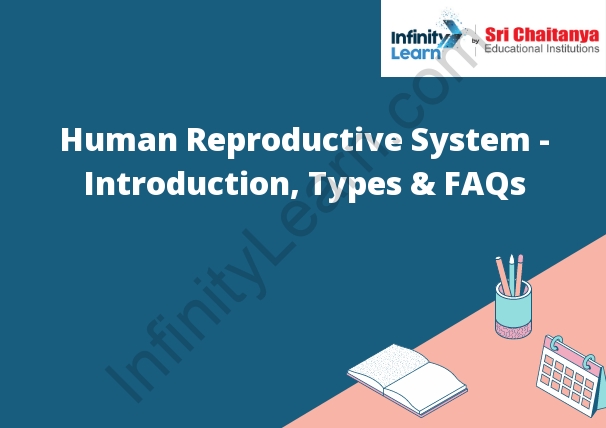Table of Contents
Introduction to Reproductive System
The reproductive system is a collection of organs that work together to produce offspring. The system includes the male and female reproductive organs, as well as the hormones that control their function.
The male reproductive system includes the penis, the scrotum, the testes, and the prostate gland. The penis is used to transfer sperm to the female reproductive system. The scrotum is a sac-like structure that hangs below the penis and contains the testes. The testes produce sperm and the male sex hormone testosterone. The prostate gland is a small gland located just below the bladder. It helps to produce semen.
The female reproductive system includes the vagina, the uterus, the ovaries, and the fallopian tubes. The vagina is a muscular tube that leads from the outside of the body to the uterus. The uterus is a hollow organ where a baby grows. The ovaries are two small, egg-shaped organs that produce the female sex hormones estrogen and progesterone. The fallopian tubes are two thin tubes that lead from the ovaries to the uterus. The fallopian tubes help to transfer the fertilized egg from the ovary to the uterus.

Types of Reproduction
There are a variety of ways that organisms can reproduce. The most common type of reproduction is sexual reproduction, which involves the fusion of two gametes (sex cells) to create a new organism. Another type of reproduction is asexual reproduction, which involves the division of a single cell to create two new cells.
Reproduction in Human Beings
Reproduction is the process by which new individual organisms are produced from their parents. Reproduction is a fundamental feature of all living organisms and it is the process that perpetuates life.
In human beings, the process of reproduction is accomplished through the union of a male and female sex cells, called gametes. The gametes are produced by the male and female reproductive organs. The male reproductive organs, the testes, produce sperm, while the female reproductive organs, the ovaries, produce eggs.
When a male and female gamete fuse, a new organism is created. This new organism is genetically identical to its parents. The process of reproduction is a carefully orchestrated sequence of events that results in the creation of a new individual.
Human Reproductive System
In detail, the human reproductive system includes the male and female sex organs and the hormones that control their functions. The primary sex organs are the gonads, or sex glands. In males, the gonads are the testes, and in females, the gonads are the ovaries. The sex organs produce the gametes, or sex cells, which are the sperm in males and the eggs in females. The sex hormones are the chemicals that control the functions of the sex organs. In males, the sex hormones are testosterone and spermatozoon, and in females, the sex hormones are estrogen and progesterone.
Male Reproductive System
The male reproductive system consists of the penis, the scrotum, the testes, the epididymis, the vas deferens, the seminal vesicles, and the prostate gland.
The penis is a cylindrical organ that becomes erect when filled with blood. The scrotum is a pouch of skin that hangs below the penis and contains the testes. The testes produce sperm and testosterone. The epididymis is a long, coiled tube that sits on top of the testes. The vas deferens is a long, narrow tube that carries sperm from the epididymis to the seminal vesicles. The seminal vesicles are sac-like structures that produce semen. The prostate gland is a small, walnut-sized gland that surrounds the urethra and contributes fluid to semen.
When a man becomes sexually aroused, nerve impulses stimulate the penis to become erect. The erect penis is inserted into the woman’s vagina. Sperm are then deposited in the woman’s reproductive tract. The sperm travel through the woman’s reproductive tract and fertilize an egg. If the egg is fertilized, it implants in the woman’s uterus and the developing baby is nourished by the woman’s blood and tissues.
Functions of the male reproductive system
The male reproductive system has a number of functions, including producing sperm, transporting sperm to the female reproductive system, and supporting the development of the embryo. The male reproductive system also produces hormones, including testosterone and estrogen, which play important roles in the development and function of the male reproductive system.
Female Reproductive System
The female reproductive system is a system of organs in a female body that work together to produce a new life. The system includes the uterus, ovaries, fallopian tubes, and vagina. The uterus is a muscular organ where a baby grows. The ovaries are two small, almond-shaped organs that produce eggs. The fallopian tubes are two thin tubes that carry the eggs from the ovaries to the uterus. The vagina is a muscular tube that connects the uterus to the outside of the body.
Functions of the Female Reproductive System
The female reproductive system has several important functions. It produces female sex hormones, which allow the body to develop and function sexually. It also produces eggs, which can be fertilized by sperm to create a baby. The female reproductive system also helps to protect the growing fetus and to nourish the baby after it is born.
Reproduction Process in Human Beings
The process of human reproduction is a complex one that involves the fusion of two cells, the sperm and the egg, to create a new individual. The process begins when a man’s penis becomes erect and he deposits semen (containing sperm) into the woman’s vagina. The sperm then swim up the woman’s reproductive tract to the egg. If the sperm meets the egg, the two cells fuse and the new individual begins to develop.









